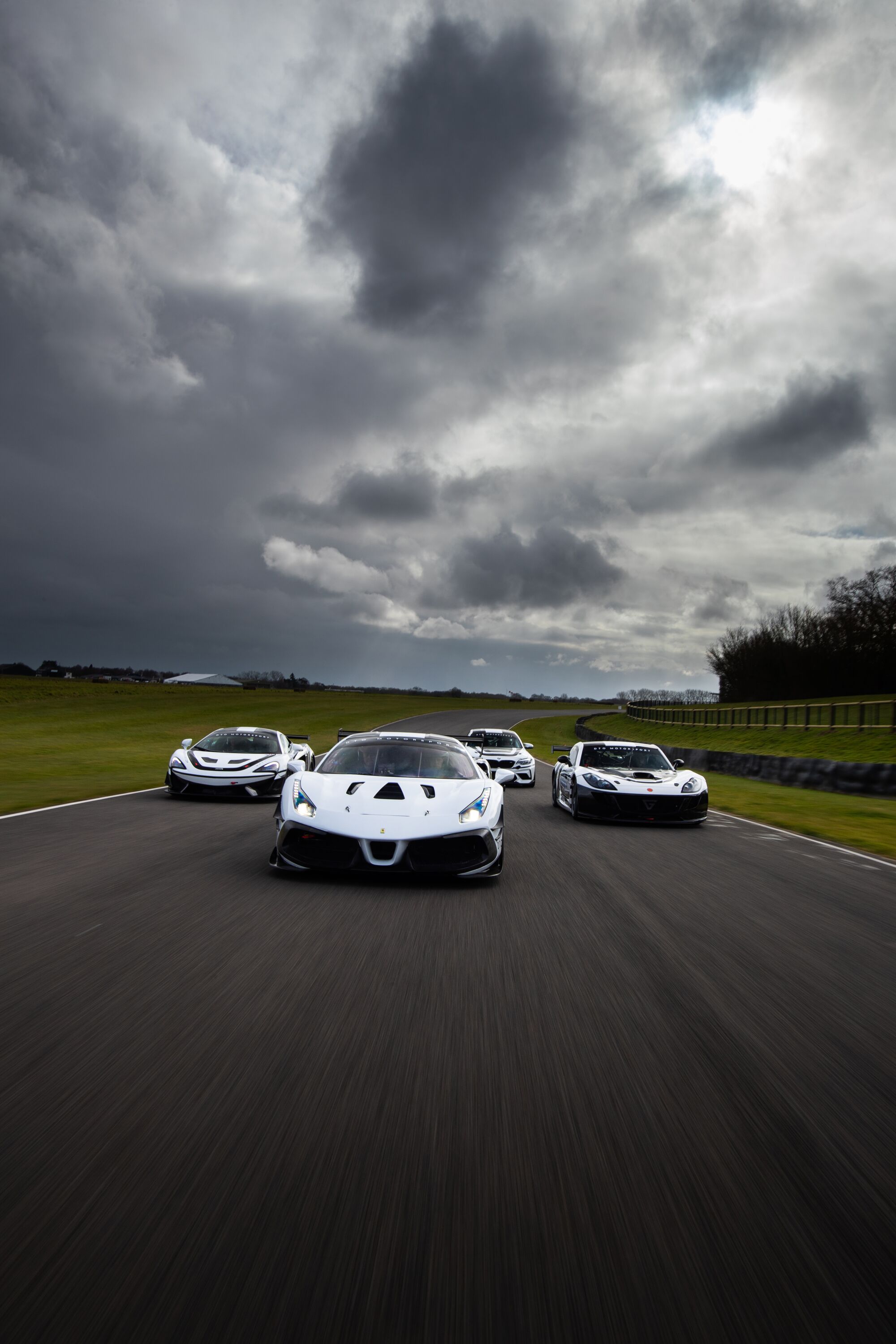Sampling the Can-Am stars of the Whitsun Trophy | Frankel’s Insight
 Andrew Frankel
Andrew Frankel
It was 60 years ago, in the penultimate year of racing at Goodwood, that a whole new category of car first raced there. These were cars conceived primarily for the new ‘Group 7’ category of gloriously unhinged sportscars that would start the following year in 1966 and provide the regulations for the Can-Am Championship, the most exciting racing spectacle North America had ever witnessed. And it was that way because you could have written the rules on the back of a Rizla paper.

At the 1965 Easter Meeting at Goodwood, the Lavant Cup had a rather different tone to it. The howls of small-capacity cars like the Lotus 19, Brabham BT8 and Cooper Monaco that had peopled the grid the year before were replaced by ground-shaking thunder, as the new cars toting vast American V8 motors lined up in their place.
The race was won by Jim Clark, wrestling his Lotus 30 to victory with Bruce McLaren’s McLaren M1 and the Lola T70 of David Hobbs filling the rest of the podium. How much faster were these cars? Well, the fastest lap of the 1964 Lavant Cup was set at 1:27.0 by Jackie Stewart in the Cooper Monaco. In 1965, Clark would do a 1:20.8 lap, less than half a second slower than the outright lap record set by both Scotsmen earlier in the day in their Formula 1 cars.
I love those big banger sportscars. There is something so elemental, so brutal and yet beautiful about them. But what are they like to drive? Back in 2011 I got to find out, in a T70 and McLaren M1B that had come first and second in the previous year’s Revival Whitsun Trophy race, after a flag-to-flag battle in the finest Goodwood traditions.

With over 507PS (373kW) and weighing perhaps 800kg they were clearly going to provide outrageous performance, but it wasn’t that which worried me so much as the thought of these elderly mid-engined cars trying to deploy that kind of power through the medium of skinny Dunlop tyres.
I’ve probably spent more time racing on old Dunlop crossplies than all other tyre types put together and am well aware of their limitations. They’re great fun when skidding about in little 1,600cc Alfas, but even then you’re aware of the compromise they impose on the car which is actually all part of the fun. The Lola and McLaren however, with three times the power-to-weight ratio? At least. Well, I certainly wasn’t going to get bored.
Both cars have essentially identical powertrains, with 5-litre Chevy V8 motors and five-speed Hewland gearboxes, but while Lola was by then already an established constructor of racing cars in a plethora of formulae and which had been around since 1958, the first proper McLaren racing car only had its debut competitive outing in September 1964, little more than half a year before the Goodwood Easter meet.

I took the McLaren first and learned all over again a lesson I’m still trying to teach myself after 40 years of driving racing cars: you can get used to almost anything. So, while at first I found its performance near uncontainable, after a few laps I was able to get my head around it and focus on what the car was doing.
And wildly fast though it was, it seemed almost too benign. Rather than doing everything from the rear, its limitation was its front end, which seemed just a touch too inclined to push into gentle understeer. It was actually very reassuring, and meant I could push hard, reassured as I was by its excellent brakes and outstanding traction.
But the Lola showed at once the maturity of its design. Unlike the McLaren, which was built with a traditional tubular spaceframe, the T70 had a proper monocoque making it not just safer, but far stiffer, too. If I had driven it first I’d probably have been massively intimidated by its appetite for an apex.
But now its performance was no longer a surprise, I just loved it. Beautifully balanced, gorgeously driftable but seemingly completely trustworthy. Of the two it’s the one I’d have chosen to spend the rest of the day in.

At the time I spoke about the cars to both John Surtees, who won the inaugural Can-Am Championship in a T70, and his quickest rival, the McLaren-borne Chris Amon. Both I absolutely adored. Big John told me: “Winning that title was just superb. Once it was developed the car was terrific to drive and the way we did it, with just a van and a driver-cum-mechanic, relying on local help at each track — well, it could hardly have been more different to Formula 1.”
Chris actually thought the McLaren’s lack of competitiveness was due more to the reliability of the engines they were using than any shortcomings in the chassis, but concluded our chat with an instructive comparison between the Big Bangers and the F1 cars of the era.
“I hated the 1.5-litre F1 cars,” Amon said. “No power, even less torque and if you got them sideways they just stopped. And here were cars which even in the early days had better than [406PS, 298kW], easily double what we had in F1. I grew up in a Maserati 250F which just drifted everywhere, and here were cars you could drive the same way.”
They certainly are. And they’ll be out again, doing exactly that at the Revival in September. I can’t wait.
Tickets for the Goodwood Revival are limited! Saturday tickets have sold out, so secure your Friday and Sunday tickets to avoid missing out on the world's best historic motorsport event.
Images courtesy of Getty Images.
revival
event coverage
Whitsun Trophy
Lola T70
mclaren m1b
frankel's insight
Whitsun Trophy feature









